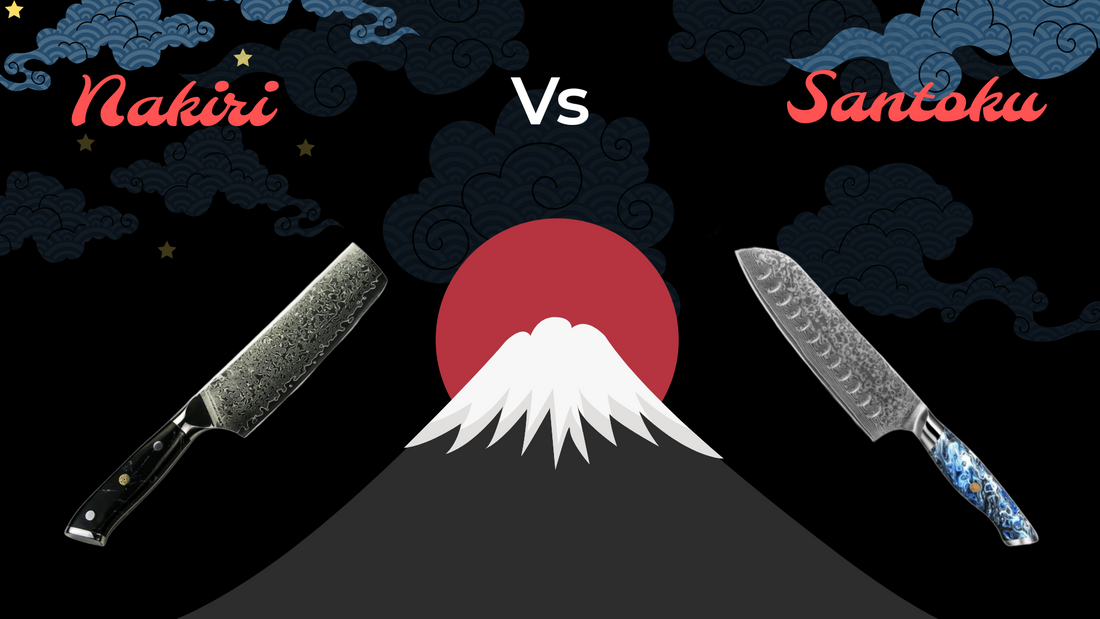Nakiri Knives are a great addition to anybody's knife kit it is a very versatile knife but it is lacking a little bit in what it can do because of the lack of tip where it lacks in its versatility it makes up for in its uh awesomeness with regards to chopping vegetables if you're looking just for a knife where you can julienne and rip through veggies super super fast the Nakiri is the knife for you.
Santoku Knives are easily one of the most recognizable knife shapes in the world today the shape was originally developed around the 1950s in Japan but has since been copied by knife makers around the world and for good reason this knife is perfect for home cooks it comes in a little bit shorter than your average eight inch chef's knife making it a little easier to wield and less intimidating the word itself santoku translates to three virtues which refers to slicing dicing and chopping or meat fish and vegetables depending on who you ask basically the name tries to imply the extreme versatility of the knife again contributing to its extreme popularity around the world.
1. Blade Design
The Santoku knife, with its shorter, wider blade and upward-curved tip, is a versatile all-purpose tool. It excels in slicing, dicing, and chopping, making it a jack-of-all-trades in the kitchen. On the other hand,
The Nakiri knife features a straight, squared-off blade, ideal for precise, up-and-down chopping motions, particularly when working with vegetables.
2. Cutting Technique: Rocking vs. Chopping

The Santoku knife, inspired by its Western counterparts, allows for a rocking motion when cutting, making it suitable for those accustomed to a more fluid cutting style. In contrast,
The Nakiri knife's design encourages a straight up-and-down chopping technique, ideal for achieving uniform cuts and precision when preparing vegetables.
3. Versatility: All-in-One vs. Vegetable Specialist
4. Blade Thickness

Santoku knives often have thicker blades, providing more power when cutting through denser ingredients. This thickness can be advantageous for tasks that require a bit more force. In contrast,
Nakiri knives typically feature thinner blades, offering precision and finesse when working with vegetables.
5. Tip Shape: Pointed vs. Flat
The pointed tip of the Santoku knife allows for more precision, making it suitable for intricate cutting tasks and handling meat. On the other hand, the flat tip of the Nakiri knife aids in efficient chopping and provides a larger surface area for contact with the cutting board.
6. Cultural Heritage
The Santoku knife, with its name translating to "three virtues" in Japanese, reflects its ability to excel in slicing, dicing, and chopping. It seamlessly integrates both Western and Japanese cutting techniques.
The Nakiri knife, deeply rooted in Japanese culinary tradition, pays homage to its specialization in vegetable preparation.
Conclusion
In the culinary showdown between the Santoku and Nakiri knives, the choice ultimately boils down to your preferred cutting style and the tasks at hand. Whether you Choose for the versatility of the Santoku or the precision of Nakiri, both knives bring unique strengths to the kitchen.

